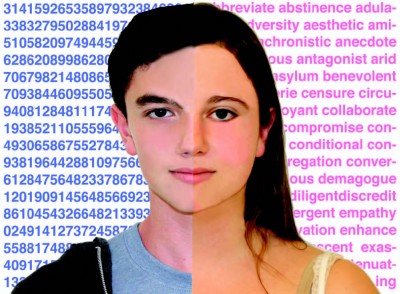Shannon Moss ’11 & Dana Rapapport ’11
Web News Editor & Web Opinions Editor

Scott Grundei ’10 is a male student who has excelled in his English classes. Since freshman year, he has always been in the highest level English course, starting with English 1H and now with AP English Literature.
However, Grundei and boys who excel in language arts are not the norm. The stereotype that boys succeed at math and girls succeed at English seems to hold true at Staples.
The Staples 2009-10 enrollment statistics in high level English courses display a wide gap between the number of girls and boys who take math and English classes.
In English 2H, for example, a course for sophomores, the percentage of girls to boys is 74.19 percent to 25.81 percent, roughly three girls to every boy.
The trend continues in AP English Literature, a course for seniors, where girls make up 68.66 percent of the class and boys make up 31.34 percent.
Conversely, the same trend of a gap is occurring in the math department.
Although the gap is not as prominent as it is in the English class enrollment, many high leveled math courses display the opposite tendency English does.
In AP Statistics, the class is composed of 61 percent boys and 39 percent girls. Likewise, in AP Calculus BC boys make up 66 percent of the class while girls only make up 33 percent.
These statistics have been assessed by Staples’ English and math departments. Through continual research, the English department has found that these numbers are a national trend.
“SAT scores have shown that girls are more successful on the writing portions than math,” English 6-12 Coordinator Lisabeth Comm said.
The Connecticut Total Group Report, a compilation of SAT results released by the College Board, displays the national average of SAT scores from 1972-2009. Since 1972, boys have continuously scored at least 30 points higher than girls on the mathematics portion of the standardized test.
Since 2006, girls have scored about 20 points higher than boys on the writing section.
However, the difference between critical reading scores among boys and girls is negligible.
Both Comm and Corbo have concluded that one explanations for the is gender gap could be brain differences.
Will McBride, an educational consultant author, has found information on brain differences pertaining to his research on “Teaching to Gender Differences.”
McBride notes that girls tend to have “cortical areas devoted to verbal functioning […] and the complexities of reading and writing.”
Whereas “[b]oys’ brains are better suited to symbols, abstractions, and pictures. Consequently, boys generally learn higher math and physics better than girls,” he wrote.
When applied to the Staples’ enrollment statistics in both English and math, McBride’s research could explain the trend.
Social pressures and interests are another assumption Comm and Corbo both separately mentioned as potential reasons for the gender gap. When asked about this disparity in gender, Corbo said that he did not believe it had anything to do with ability.
“It’s not because girls are incompetent or can’t do the math, it’s because they are choosing to put their effort elsewhere,” Corbo said.
AP Calculus BC teacher Robin Sacilotto, whose course has the biggest gender gap, seconds Corbo’s opinion with a personal experience.
“Last year I recommended a girl for Multi–Variable Calculus, and she decided not to do it. She was a student fully capable of the course, however I believe she wanted to focus on another subject,” Sacilotto said.
English and math teachers have individually noticed that within their respective classes the ability and comfort level is equal between the genders. When pertaining to gender, Sacilotto has not noticed an imbalance of grades in her AP Calculus BC class. Comm too recalled that when she taught AP English Language the grades always seemed similar.
However just as is the case with equations, there are outliers. These students could be the girl advancing in high level mathematics classes and the boy succeeding in the high level English courses.
“I have always favored text analysis opposed to working out problems,” Grundei said. “I enjoy how English opens the opportunity for freedom of discussion opposed to math where there is only one right answer.”
Grundei enjoys the shades of gray in English as opposed to the black and white of math.
Kat Krieger ’10 has shown consistent achievement in high leveled mathematics courses since her freshman year. Currently in Multi-Variable Calculus BC, she attributes her love of math to the objective characteristics of the subject.
“I don’t like to explain or analyze my answers as I have to in English classes,” Krieger said. “I like that there is one right answer in math. It’s a hit or miss.”
And as for representing the minority gender, Grundei and Krieger noted that they have not noticed the difference while in their particular classes.
For the future, Comm, Corbo and Sacilotto expressed desire to equalize the imbalance in distribution of boys and girls in both the English and math departments.














































shintelle • Dec 17, 2009 at 1:37 pm
I personally agree with this. I am a female, in honors english and history, I however am failing my Algebra 2 class with a 57 % i am not saying this is a grounded fact but i would easily believe that there are intellectual differences in the genetic make up between genders.
Mike Schneider • Nov 15, 2009 at 2:16 am
Wonderfully ambitious and interesting piece. Love the graphic, too. The piece would definitely benefit from some graphs, though (I'm a boy who has trouble visualizing so many black and white numbers!)